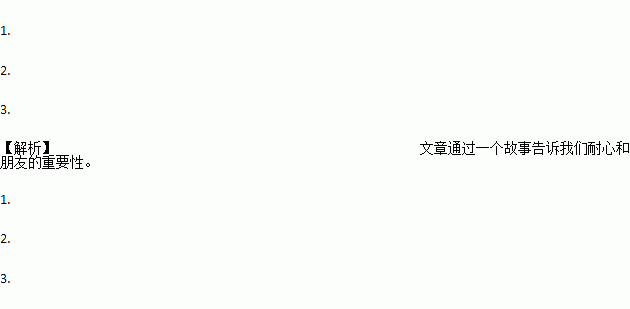题目内容
Victor’s hobby was collecting stamps. He had stamps from many countries, like England, Canada and China. On his birthday, can you guess what people gave him? That’s right—stamps.
Victor’s favorite stamps came from France. He had almost every stamp from 1954 to 2004. He only needed one. That was a 1974 special edition*. It was very hard to find.
He looked for it everywhere. He asked his friends and relatives to help him. But nobody could find the stamp. It made Victor very sad.
“Don’t worry. Never give up,” his father said to him. “If you have enough patience, you’ll find it one day.”
“I hope so,” Victor said.
Victor also liked writing. He had a pen friend in France. They wrote to each other every month. Victor’s pen friend, Phillip, usually used new stamps to send letters. Sometimes, his mother gave him stamps to use. Once Phillip’s mother gave him a big, green stamp. It looked old. When Victor received the letter, he was very surprised. On the envelope, he looked carefully at the stamp. It was the 1974 special edition stamp. Victor was so happy. He told his sister, his mother and his father.
“You see,” his father said. “You did find your stamp. So, it’s good to have two things in life. ”
“What are they?” Victor asked.
“Friends and patience.” He answered.
1.It was very difficult for Victor to find a special French stamp of _________.
A. 1954 B. 1974
C. 1994 D. 2004
2.Who owned the special edition stamp at the very beginning?
A. Phillip. B. Phillip’s mother.
C. Victor. D. Victor’s father.
3.The passage mainly tells us that ________ is(are)important to people.
A. a happy family B. a good hobby
C. relatives and friendship D. friends and patience
 学业测评一课一测系列答案
学业测评一课一测系列答案 小学课时作业全通练案系列答案
小学课时作业全通练案系列答案
